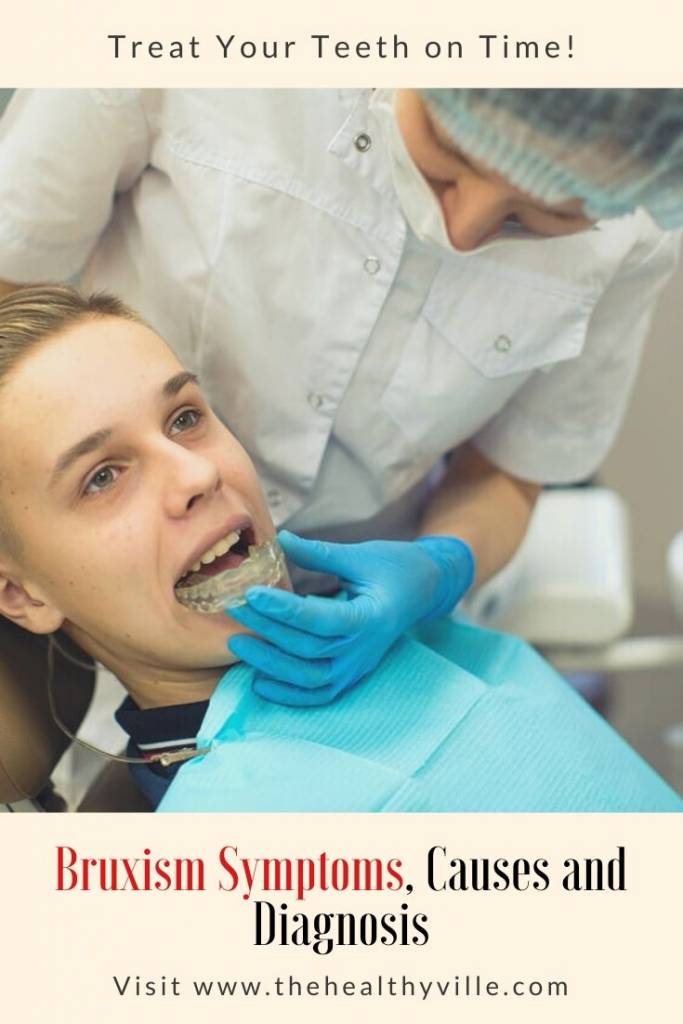Discover the bruxism symptoms, find out its causes and make sure you treat your teeth, to avoid complications that can further compromise your heath.
Many people wake up every day with pain in the facial muscles or in the head. Without being aware, they may be clenching their jaw and grinding their teeth, especially when sleeping. Do you know what bruxism is? This time we want to tell you what this problem is.
What is bruxism?
Coinciding with a publication in the Journal of International Oral Health, bruxism refers to a problem of the temporomandibular joint (TMJ), which lies between the temporal bone and the jaw, facilitating mandibular movement.
Said movement includes the opening and closing of the jaw and the lateral movements of it. This joint is related to dental occlusion and the neuromuscular system, making chewing, swallowing and phonation functions possible.
The disorder of this joint is due to the alteration of the mandibular muscles and adjacent structures, which causes damage to the joint and musculature that joins the jaw with the temporal bone.
Likewise, the union between the cartilaginous disc and the part of the jaw bone that articulates with it (condyle) is compromised at different levels of severity, which will mark the evolution of the different phases of the pathology.
Among the most frequent causes of this disease we can find:
- Muscle pain.
- Skeletal asymmetry.
- Arthritis.
- Degenerative disorders.
- Inflammatory diseases of the temporomandibular joints.
- Stress.
- Malocclusion.
Bruxism can cause facial muscle discomfort and tooth wear. It is also related to tooth sensitivity, headache and tension.
Bruxism symptoms
The bruxism symptoms can vary between one patient and another. However, there are some that are characteristic of this pathology and that facilitate its diagnosis. Clinical manifestations include:
- Constant headaches and neck aches.
- Discomfort in facial muscles or tooth wear.
- Grinding or clenching your teeth.
- Having flat, fractured, broken or loose teeth.
- Tooth sensitivity.
- Pain similar to earache, without actually being an ear problem.
- Bite the inside of the cheek.
- Sleep disturbances.
How to detect it?
To carry out an accurate diagnosis of bruxism and TMJ, doctors perform various tests, such as articulated models of the oral cavity, radiographs and magnetic resonances. In general, these allow valuation of disco-condyle capture.
Once doctors detect the problem, it is essential to start a treatment, since otherwise it can reduce the patient’s quality of life and increase the risk of problems of greater care. The treatment of this disease can be complicated over time if it is not treated correctly, so it is essential to go to the dentist when perceiving the first signs.
Types
This pathology can be diurnal or nocturnal. In fact, both types of bruxism can have similar symptoms.
Daytime bruxism is related to external stimuli of the psychosocial or environmental type.
Night bruxism is a muscular disorder that causes jaw movements and grinding of the teeth during sleeping hours through an involuntary rhythm.
How to treat it?
Information published in the National Center for Biotechnology Information suggests that the management of bruxism varies depending on the triggers. Therefore, a diagnosis is first necessary. Once the doctor detects the problem, you can address it with the following treatments:
Anti-inflammatory drugs
One of the most conservative options is drug use. Among the most used to treat bruxism are analgesics or anti-inflammatories, which help reduce inflammation and discomfort of this pathology.
In fact, anti-inflammatories are part of the treatment against bruxism. However, other therapeutic options are necessary to correct it.
Splint
This device aims to reposition the condyles to their centrally located position and relax the muscles progressively. It also decreases the tendency to bruxism and protects the teeth from wear and tear, improving the quality of sleep.
The splint is made to measure for each patient, and is used for sleeping. It is the only treatment that can definitively correct the symptoms of bruxism.
Visit a physiotherapist
With the help of the professional in physiotherapy, a series of procedures for recovering the function of mobile structures are worked through the use of therapeutic movements. This is intended to relax the masticatory muscles and eliminate possible contractures.
Takeaway
Bruxism can cause dental problems, as well as headaches, tension, muscle discomfort, among other symptoms. If you suspect you have the condition, it is best to request medical and dental care, since diagnosis is key to starting an effective treatment.
Don’t forget to SHARE the bruxism symptoms with your friends and family on your social networks!

